A Brief History of the Life of H.H. Pattison
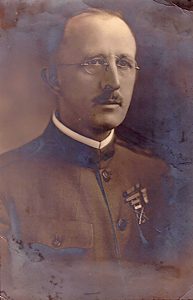
Jennifer Pattison Rumford, a granddaughter, wrote this before filling HH Pattison’s war chest with memorabilia and making the trip to Winamac. The first part of this page is her summary to the Museum, speaking both of her grandfather and the items she planned to donate to us. The Historical Society Museum is now in possession of the items mentioned here.
My grandfather (Harry Howard Pattison) was raised in the Winamac area in the late 1800s. He went on to a long Army career and eventually died in California. His brother William remained in Winamac and was a pharmacist. I have become the family member who holds onto stuff.
I have a lot of papers from Harry, as well as Army uniforms and things he brought home from Cuba, Philippines, China, and Japan. He was a spy in Japan during the Russo-Japanese war and the Emperor gave him gifts and awarded him the Order of the Rising Sun.
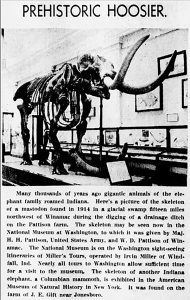
HH and his brother William donated the skeleton of a mastodon found on their farm to the Smithsonian Museum. At the time it was the most complete mastodon skeleton found. [Editor’s note: visit this webpage to learn more.]
In the Spanish American war, all the cavalry horses were lost in a disaster on the way to Cuba, so he and the cavalry cleared San Juan Hill on foot, for Teddy and the Rough Riders to ride up. He remained skeptical of Teddy until he died.
When he was serving in the Emperor’s court in Japan, he traveled by ship to San Francisco (falling in love with California then, I think), crossed the U.S., took a ship to England, and then to St. Petersburg, and then crossed Russia on the Siberian railroad, mapping and spying on Russia’s capabilities. He came home from Japan with the Japanese plan to invade the U.S. via Hawaii.

Before and during WWI, he worked to convince the Japanese to stay friends with the U.S. or to stay at least neutral. I have some photos of him with a Japanese delegation that toured the U.S.
The family story is that he took them to a DuPont plant and marched soldiers in front of them. We had plenty of soldiers, but we only had three tanks, so the tanks would go past the Japanese and then circle around and go past again and again.
He met my grandmother at Walter Reed. She was much younger and an Army nurse; he had lung problems. They married, and he retired from the Army. They had one child at Fort Mead and then traveled across country by car. My father was born in Monterey, where my grandfather was supposed to be helping to set up the Japanese school of language. I have some photos of them in the desert; my grandmother does not look very happy. They moved from Monterey to Palo Alto, and the house they lived in is still there (in a very expensive “dot com” neighborhood).
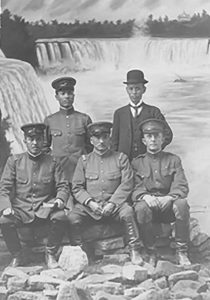
We have some weapons he brought home from the Philippines, and a mirror that he was supposedly given by Mrs. Aguinaldo. We also have a samurai sword the Emperor gave him. When the Emperor discovered he was spying on the Japanese as well as for them – acting as a double agent – he sent a stack of presents to my grandfather’s apartment with a note that said sorry to hear you are leaving on the ship in the harbor tomorrow.
Most of these items fit into his war chest; it is about 4 feet long by 3 feet wide and 3 feet high. There are some books, including a history of Indiana, that mention him, but a lot of his papers went to the Hoover library at Stanford University when he died.
The Pattisons of Pulaski County, Indiana,
Jennifer Pattison Rumford included this item from her cousin Margaret, William Pattison’s granddaughter.
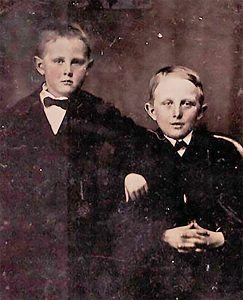
There appear from the public records (census, vital records) to have been two distinct and unrelated Pattison families residing in Pulaski County, Indiana. The first member of the family which is the subject of this history arrived in Pulaski County from Ohio in 1870: Harris E. Pattison.
A biographical sketch of Dr. Harris E. Pattison appeared in “Counties of White & Pulaski, Indiana, Historical and Biographical”, Chicago: F.A. Battey & Co. 1883:
H.E. PATTISON, M.D., was born in Mount Vernon, Ohio, February 4, 1843. His parents, David and Olive (Mitchell) Pattison, were natives respectively of New York and Massachusetts, were of Scotch-English descent, and the parents of four children, of whom a son and daughter are yet living. David Pattison, a farmer, is now residing with his second wife, in knox (sic) County, Ohio, his first wife, the mother of our subject, having died in August, 1881. Dr. Pattison was reared on his father’s farm, received a good school and academic education, and in 1860 began the study of medicine at Mount Vernon in the office of Dr. William Hayes. While yet a student, he enlisted in the

summer of 1862, in Company F, One Hundred and Twenty-first Ohio Volunteer Infantry, and immediately went to the front, assigned to the Army of the Cumberland, first under Buell, and afterward under Rosecrans. He fought as a private in the battles of Perryville and Stone River, and in several skirmishes, and in the summer of 1863 was transferred to the medical department. In 1864 he was made Assistant Surgeon, and put in charge of a field hospital; in September, 1864, his term of enlistment expired; the winter of the same year he attended medical lectures at Ann Arbor; the following winter he attended the medical department of Wooster University at Cleveland, graduating in March, 1866. The following two years, he practiced his profession at Mount Liberty, Ohio, and the next two at Hopedale. In 1870, he came to Star City, this county, where he practiced until 1875, and then came to Winamac, where he has ever since been engaged in active practice. The Doctor is a Republican, a Freemason and an Odd Fellow. In 1867, he married Miss Columbia Hayes, daughter of his preceptor, and to this marriage have been born three children–Harry H., Frank H. (deceased) and William D.
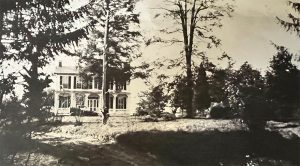
Dr. Pattison’s parents, David and Olive, joined their son in Indiana around 1872, and they remained there until Olive died in 1881, at which time David returned to his former farm in Ohio.
Dr. Pattison’s sister, Lucina, and her husband, David Lewis, had also followed the doctor from Ohio to Pulaski County in 1872, but their stay was of short duration, as they sold their land again in 1876 and moved to Fulton County. In 1879 they returned to Pulaski County, and were still living there as late as 1887, when Harris and Lucina’s father, David, made out his will, but as is clear from accounts of Dr. Pattison’s death, the Lewises
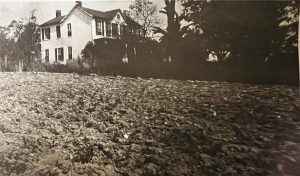
had moved again and were residing in Cohutta, Georgia in 1893.
Following the publication of this useful and informative history, Dr. Pattison’s wife, Columbia, died in 1886, when their sons Harry and William were 18 and 13 years old, respectively. Dr. Pattison remarried shortly thereafter, in 1887, to a widow, Eulalee Huddleston Van Gorder, herself the mother of a little girl, Grace. Eulalee bore Dr. Pattison another daughter, Olive, and a son, Frank H., who lived but two weeks. (Dr. Pattison and his first wife had had another son named Frank H., who lived 3 and a half months.) Sadly, Eulalee died a month after her little son, Frank, leaving Dr. Pattison a widower for the second time.
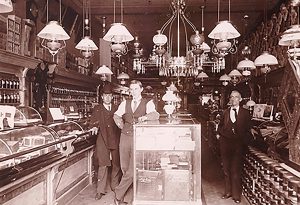
The Pulaski County Democrat published the following article on Friday, 30 October 1891 following Mrs. Pattison’s death:
Mrs. Eulalee Huddleston Pattison, wife of Dr. H.E. Pattison, died last Friday night. Her illness was long and varied, and has been frequently noted in these columns. Sometimes for a day or two she would be greatly improved, and again for a spell life would be nearly gone. But owing to the stomach trouble from which she suffered, she gradually grew weaker and weaker, though never for a moment giving up to die. Only last Thursday, when counsel was held by Drs. Shulz, Stevens and Thomas of Logansport and G.W. Thompson of this city, she was confident of recovery, and was making plans for the
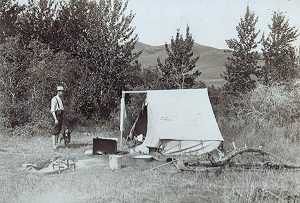
future. She was thirty-four years of age, and had lived here all her life. She leaves her husband and two little girls, one of them a daughter by her first husband, and besides these and her mother, brothers and other relatives, a host of admiring friends grieve over her demise. The remains were interred from the house Sunday afternoon, the affair being in charge of the Eastern Star lodge, and the funeral was one of the largest ever seen here.
The death of Mrs. Dr. Pattison was the first one to occur in the ranks of the Eastern Star chapter here since its organization, a year and a half ago. The funeral ceremonies are beautiful and impressive.
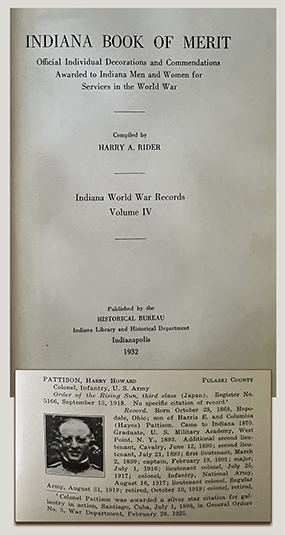
The last will of Mrs. Dr. Pattison was probated Wednesday, and it is absolutely the shortest one we have ever seen, there being but fifteen words of it counting pronoun, initial, and all. It was made Aug. 6, 1891, witnessed by B. Borders and Lillian Bouslog, and is in these words: “I give and bequeath to my beloved husband, Harris E. Pattison, all my property absolutely.” It is hard to beat that for brevity.
Dr. Pattison desires in this manner to express his earnest appreciation of all the many kindnesses shown him and his during his recent bereavement, not forgetting those who for some time previous to Mrs. Pattison’s death freely spent their time in the woods or upon the river in search of dainties to tempt the invalid’s palate.
Dr. Pattison remarried a year and a half later, in 1893. His third wife’s name was Mary C. Granger, but she was not privileged to enjoy a long life with Dr. Pattison, either, as he died six months after their wedding. Following Dr. Pattison’s death, no further records are found of Mary Granger.
Shortly before he died, the following notice appeared in the Pulaski County (IN) Democrat, 20 Oct 1893:
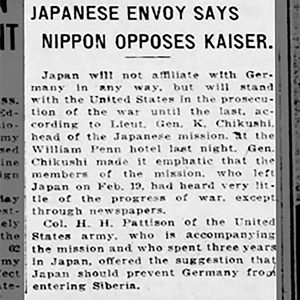
Dr. H.E. Pattison was taken sick Sunday night or Monday morning with a stomach trouble, and is yet very much out of shape. Mrs. Pattison has also been quite ill from a complication of ailments, but she is now convalescent.
The following day, this item appeared in The Democratic Journal, Winamac, IN, on 21 Oct 1893.
Dr. H.E. Pattison fell dead on the street Thursday night about nine o’clock. He had been suffering with real and imaginary ills for a week or so past, and had on that evening been taken out for a walk by John Scott and Jacob Farenbaugh. When near Mrs. Gill’s, in the northern part of town, he fell, and after one or two convulsions, was dead. ‘Tis very sad, indeed, and the doctor’s family have the sympathy of all. Dr. Pattison had been a resident of Winamac for many years, and at one time had the best practice of any physician in the county. He was a man of kindly disposition, liberal to a fault and devoted to his family. His age was about 45 years [actually, he was 50]. The doctor carried a $3,000 life insurance in the
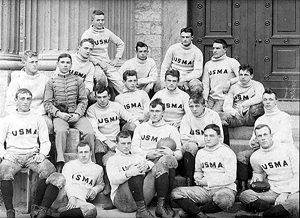
Royal Arcanum. Funeral service next Sunday afternoon.
The Pulaski County Democrat then printed the following story the next week, on 26 Oct 1893:
Last Thursday night about 9 o’clock, after all the Democrats were printed and some hundreds of them mailed, occurred the death of Dr. H.E. Pattison, whose illness was noted in that issue. As stated then, he had been taken sick early Monday morning, with a severe stomach trouble. When that phase of the ailment passed off it left him very delirious, with a desire to move about a good deal, and in an effort to prevent the heart complications that would very likely follow any endeavor to keep him quiet by force, the attendants in charge of him were instructed to go with him and
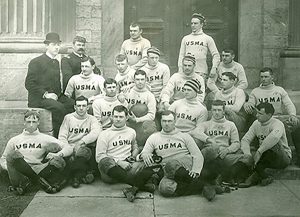
let him move about at will. At the time mentioned he wanted to walk, and Jake Farenbaugh and John Scott, who were caring for him that night, went with him. They went north on Monticello street, and when about five blocks from the house the doctor suddenly sank down on the pavement unable to proceed. A messenger was sent for the patient’s son Will, who had been up almost constantly for nearly ninety hours and was then asleep, and he in turn sent messengers for a carriage and for Dr. Moss. He found his father barely alive when he reached him, and death from heart failure came before the physician or carriage arrived. Telegrams were sent to Lieut. Harry Pattison at Fort Reno, OK, and to deceased’s sister, Mrs. Lewis, in Georgia. The latter’s health prevented her coming, but Harry arrived at 1 o’clock Sunday afternoon, an hour before the time set for his father’s burial. The funeral is said by those who have lived here many years to
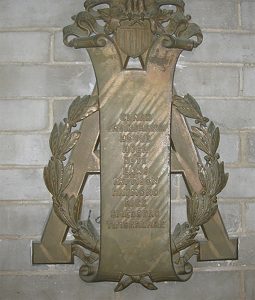
have been the largest ever seen in the county. The doctor was a member of the Masonic order, the Knights of Pythias, the Royal Arcanum and the G.A.R. Over 200 of his brothers in the various orders were in the procession, more than half of them being Masons, North Judson and Kewanna Masonic lodges coming as lodges and many others of the order being present from Star City, Francesville, Medaryville and Logansport. There were also many Knights of Pythias present from the west side and from Logansport. The funeral was in charge of Winamac Masonic Lodge, and following the completion of its ceremony at the grave, the K. of P. burial service was also rendered. Dr. Pattison had practiced medicine in this county nearly twenty-five years and was rightly considered among the best physicians of Northern Indiana. He was one of those big-hearted men who derived much pleasure from accommodations to his friends, and the very large attendance at his funeral is a good criterion of the universal kindly feeling entertained for him. His age was fifty years, eight months and fifteen days. He leaves a widow, to whom he was married about six months ago, two sons – Harry and Will – by his first wife, and a little daughter, Olive, by his second wife, who died just two years ago.
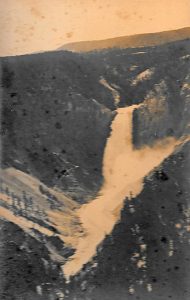
Dr. Pattison’s will is short and succinct. It is dated Dec. 30, 1891 and is filed in Winamac, Pulaski, IN.
I, Harris E. Pattison, do make this my last Will and Testament: Item one: I first desire that all my just debts be fully paid. Item two: I give and bequeath all my property both personal and real and of all kinds whatsoever to my son William D. Pattison, to be his own property absolutely. I do this, and make this my last will and request trusting to the honor and integrity of my said son William D. Pattison that he will do what is just and right toward my children Harry and Olive. And I believe that my son William D. will do toward them what is just, right and honorable. Item three: I hereby appoint my son William D. Pattison and my friend B. Borders as executors of this my last will and testament, especially directing that they be not required to give any bond for the performance of their duty as such executors. In Witness whereof I hereunto set my hand and (sic) seal this 30th day of December A.D. 1891. (signed) Harris E. Pattison
The death of Dr. Pattison left a large hole not only in the community, where he was apparently the only surgeon, but also in his family. As is stated in the article quoted above in the Democrat, Dr. Pattison was survived by a minor child, his daughter, Olive.
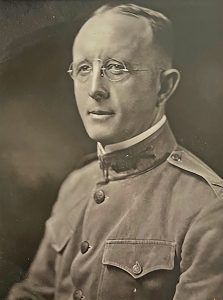
She was just five years old when she was orphaned, her mother having died two years previously, in 1891.
Olive’s half-sister, Grace Van Gorder, had died in 1892 at the age of ten. One story as to the cause of her death was that she fell from a window in an upper story. She was the daughter of Eulalee Huddleston Van Gorder Pattison from her first marriage to George Van Gorder, who died before 1887. Apparently, Grace Van Gorder had inherited some property from her father upon his death. Then, when Grace died, the property was inherited to Olive. According to her guardianship file in Pulaski County Circuit Court, there were two pieces of property. One was worth $3,000 and had a rental value of $225 per year (in 1894). The other was worth $2,000 and had an annual rental value of $180.
Guardianship of little Olive was apparently awarded at some point to her half-brother, William D. Pattison, who was just 20 years old when Dr. Pattison died. However, she spent her childhood in Catholic boarding schools or convents, including St. Mary’s Academy in Notre Dame, IN and St. Mary’s Institute in Vigo Co., IN. She also attended
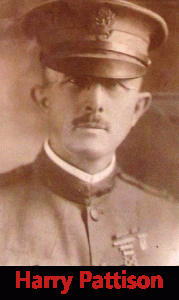
schools in Minister, OH, Glandorf, OH, and St. Louis, MO, and lived at one time with her other surviving half-brother, Harry H. Pattison.
When Olive turned 18, she returned to Winamac and resided at the Frain Hotel until she was 21, in 1909, at which point the guardianship file ends. Later that year, she married George McLaughlin. It is interesting that the Pattisons sent her to Catholic institutions, as they were not Catholic themselves. Her Catholic upbringing remained with Olive the rest of her life. She, her husband, and all their children are buried in the St. Peters Catholic Cemetery in Winamac, IN.
During her life, Olive resided at 113 1/2 North Market Street in Winamac. She was also widowed at a young age, her husband George having passed away in 1927, leaving her with 4 children to raise alone: Georgeann (16 at the time of George’s death), John (14), Peg (11), and Patty (3). Olive ran a hairstyling business from her home in order to make ends meet. She died in 1974 at the age of 85.
Dr. Pattison’s son William also remained in Winamac, becoming a successful businessman. Even though he was just 20 when his father died, William’s course in life had already been decided, in that he had three years previously begun an
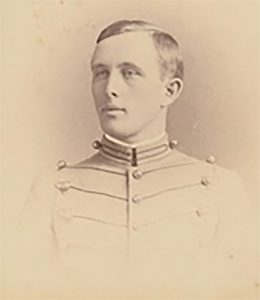
apprenticeship as a druggist.
The following obituary appeared on the first page of the 9 Jun 1942 issue of the Pulaski County Democrat:
The death of William D. Pattison, long one of Winamac’s best known and most highly esteemed businessmen, occurred Monday morning at Billings hospital in Chicago, to which he had been taken a week previously. He had been sick for about a month, several complications having followed an attack of jaundice. [He actually died of liver cancer, but they didn’t like to mention the C word back then.] Funeral services were held yesterday afternoon at the Fry & Lange chapel, conducted by the Rev. O.L. Collier. The Masonic order was in charge, and held burial ceremonies in the Winamac cemetery. Mr. Pattison was sixty-nine years of age last March 6, and was a resident of Pulaski county during his entire life. A son of Dr. Harris E. Pattison, he was born at Star City but moved to Winamac with his parents when he was a small child. As a lad in high school he worked part time in Smith’s drug store, taking regular employment at Carper’s drug store in the 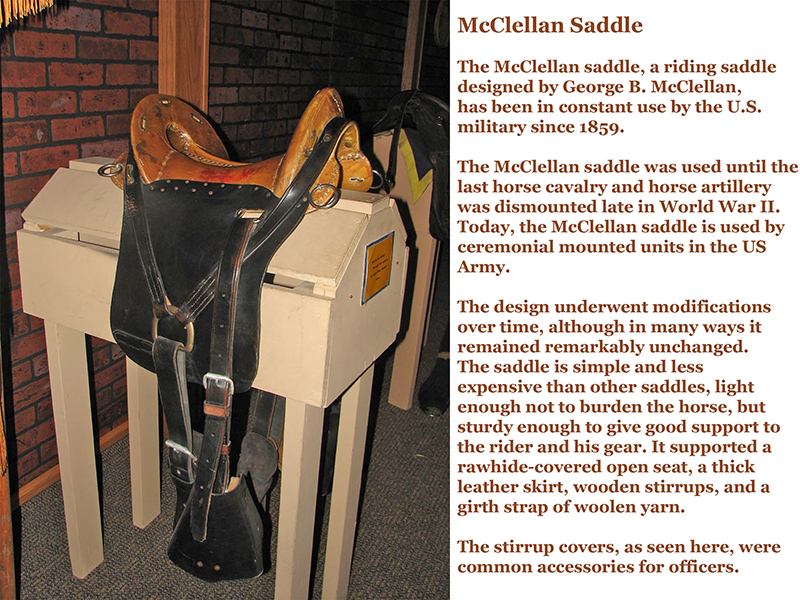 early ’90’s. He retained his identity with that establishment for forty-seven years, most of the time in partnership with the late Mac Carper, and owner after the latter’s death in 1937. Three years ago he sold the store to the present owner, W.A. Logan. Then, after a lapse of a full half century, he returned a few months ago to Smith’s drug store as a temporary employe (sic) during John Kruger’s service in the army. Numerous community activities felt the influence of Mr. Pattison’s energy and integrity. He served as a member of the town school board and on the town council. In Masonry he presided over the local lodge as Master for a number of years and had received all degrees in the York rite, Scottish rite and Mystic Shrine. When the Kiwanis club was formed he became a charter member, later served as president and maintained an almost perfect attendance record up to the time of his final illness. The club held a special service in his honor at its regular meeting Tuesday noon, and visited the funeral chapel in a body on Wednesday. Surviving are son Sergeant Harry Pattison,
early ’90’s. He retained his identity with that establishment for forty-seven years, most of the time in partnership with the late Mac Carper, and owner after the latter’s death in 1937. Three years ago he sold the store to the present owner, W.A. Logan. Then, after a lapse of a full half century, he returned a few months ago to Smith’s drug store as a temporary employe (sic) during John Kruger’s service in the army. Numerous community activities felt the influence of Mr. Pattison’s energy and integrity. He served as a member of the town school board and on the town council. In Masonry he presided over the local lodge as Master for a number of years and had received all degrees in the York rite, Scottish rite and Mystic Shrine. When the Kiwanis club was formed he became a charter member, later served as president and maintained an almost perfect attendance record up to the time of his final illness. The club held a special service in his honor at its regular meeting Tuesday noon, and visited the funeral chapel in a body on Wednesday. Surviving are son Sergeant Harry Pattison,
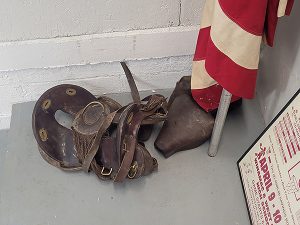
stationed at Rantoul, Ill., and son William of Chicago; daughters Mrs. MaryCo Cooper of Chicago and Miss Virginia of Salisbury, Md.; one brother, Col. Harry H. Pattison, U.S. Army retired, of Palo Alto, Calif., and a half-sister, Mrs. Olive McLaughlin of Winamac.
The Winamac (IN) Republican published the following obituary on 11 Jun 1942.
Although not unexpected, yet the community was shocked Monday when a message was received here that William David Pattison, well known local druggist, had died that morning at the Billings Memorial hospital at Chicago. Mr. Pattison had been ailing for the past four months, gradually growing worse. Two weeks ago he was taken to a hospital and later that week returned home. A week ago Sunday night, his condition becoming serious he was taken to the Billings hospital. Saturday following an operation Thursday he lapsed into a coma and never regained
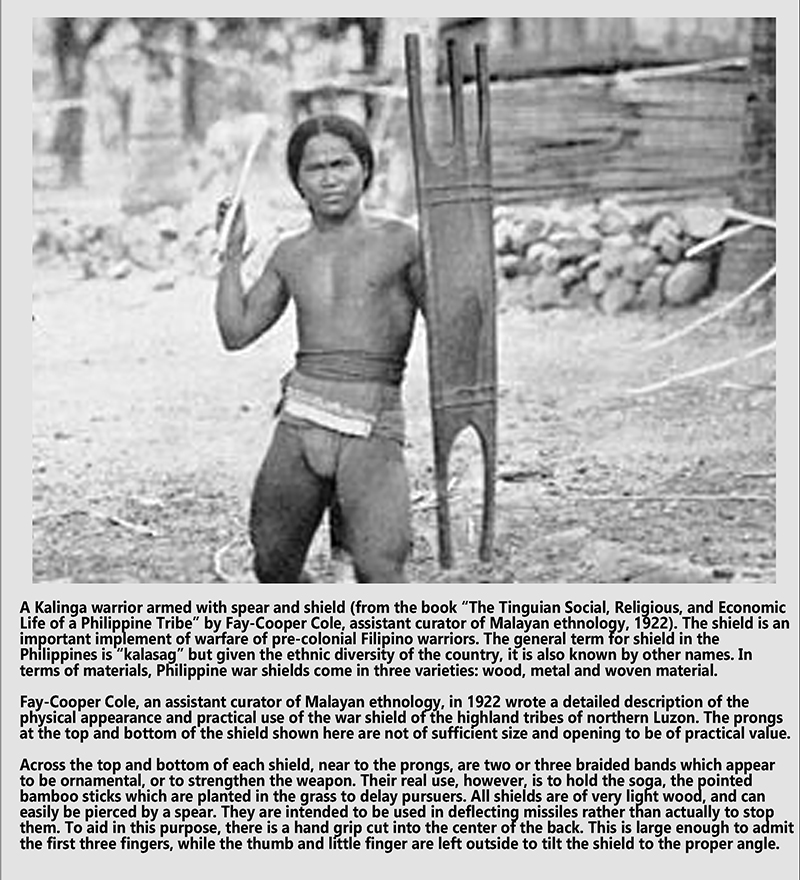
consciousness. Death was due to complications. He started in the drug business at the age of 17, working a year for the late Lin Smith, later becoming successively part owner and later sole owner of Carper’s drug store, which he disposed of to William Logan three years ago last month after 49 years in business. Following his disposal of his business he took an extended vacation, later working in drug stores at Rochester and Logansport. His last employment, which his illness caused him to give up, was at Smith’s drug store. A 32nd degree Mason, he was a past master of the Winamac Masonic lodge, and also a past president of the local Kiwanis club. Although a quiet, unassuming man, he was always a leader in civic activities. A son of Dr. Harris E. and Columbia Hayes Pattison, he was born at Star City March 6, 1873. While yet a child, the family moved to Winamac. Oct. 18, 1910, he was united in marriage with Jessie Heise at her home in Indian Creek. Four children were born to this union. Surviving children are Sergt. Harry Pattison of the Army Medical
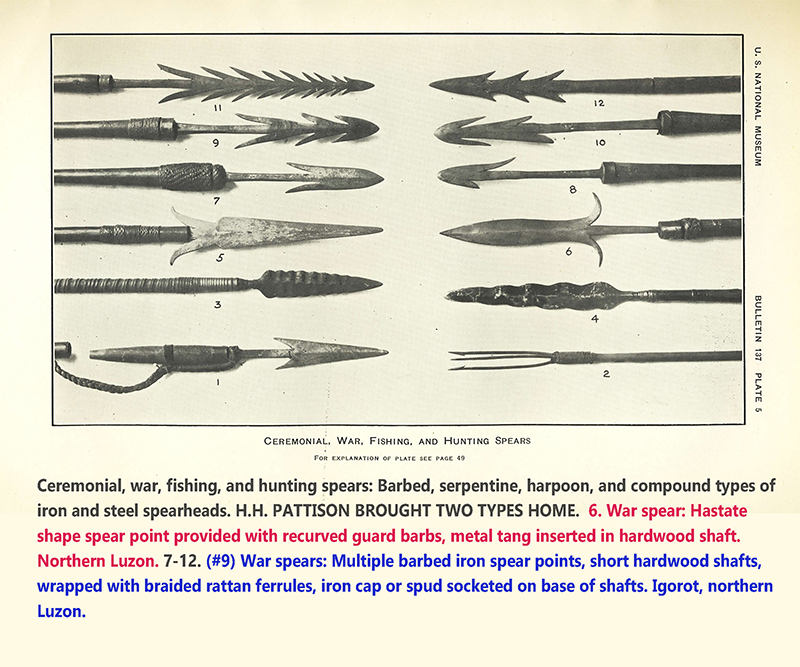
Corps, Rantoul, IL; Mrs. Mary Co Cooper and William, Jr., Chicago; Virginia, Salisbury, MD; a brother, Col. Harry Pattison, Palo Alto, CA, and a half sister, Mrs. Olive McLaughlin, Winamac. Funeral services were held Wednesday afternoon at 3 o’clock at the Fry & Lange funeral home in charge of the Masonic lodge with interment in the Winamac cemetery.
None of William Pattison’s four children lived in Winamac as an adult.
Dr. Pattison’s elder son, Harry, left Winamac to attend West Point, from which he graduated in 1893, embarking on a splendid military career. He never returned to Indiana. He died in 1951 in Palo Alto.
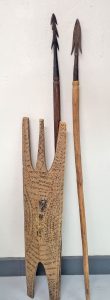
There ends the story of the Pattisons of Pulaski County, Indiana. The family has continued to produce descendants down to the present generation, but none of them has roots in Pulaski County anymore. I would love to find out more about the (Free-) Masons of Winamac, about medical care in the Midwest the mid- to late 19th century, and about any of the people mentioned in any of these anecdotes, whether they are related to the Pattisons or not. Margaret Pattison is the author of this article.
Harry Howard Pattison
Written by Jennifer Pattison Rumford, Granddaughter
Born 28 October 1868, Hopedale, Ohio.
Died4October1951,PaloAlto,California.
Buried in San Bruno, California Golden Gate National Cemetery.
Family history says that he was accepted to West Point twice, turning it down the first time because he wanted to be a doctor like this father. This didn’t work out, and he was accepted a second time and attended. While at West Point, he played football and baseball. His name is on the wall at West Point as having played in the second Army/Navy game. By 1880 the Pattison
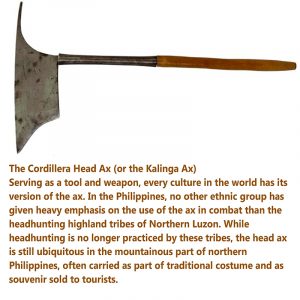
family lived in Winamac, or on their farm property near-by. [Editor’s note: their property was in Rich Grove Township.]
Wives
Harry Howard Pattison married Augusta Isabella Campbell in Racine, Wisconsin, on July 26, 1891, when he was 22 years old and attending West Point. She died in 1892, possibly of TB (family story).
He married Isabel Purington in 1895. He may have adopted her daughter, Elizabeth (Betty), as she was referred to later in life and in some documents as Elizabeth Pattison. She is identified in his will as his adopted daughter.IsabelpassedawayonApril21,1905,inHill,Montana.
He married Lola Charlton in Philadelphia, Pennsylvania, on September 12, 1918.
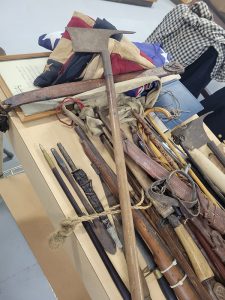
Military record
US Military Academy (West Point) 1889 – 1893
Graduates 35th in class.
June1893 * Is now a 2nd Lieutenant of Cavalry.
July 1893 * Is now a 2nd Lieutenant.
1893 – 1898
July 1893 through October 1895 * Fort Reno, Oklahoma Territory. Lt Col Purington was also stationed there. HHP probably met his second wife (Isabel Purington).
November 1895 * Jefferson Barracks, St Louis, Missouri.
March 1896 * Fort Leavenworth, Kansas. With the 3rd Cavalry (which must have been a detached duty).

Spanish American War, April – December, 1898
June 1898 * Camp Hamilton, Santiago, Cuba.
- From the National Park Service website in regard to Theodore Roosevelt,
The Battle of San Juan Heights was fought on July 1 … [Roosevelt} led a series of charges up Kettle Hill towards San Juan Heights on his horse, Texas, while the Rough Riders followed on foot. He rode up and down the hill encouraging his men with the orders to ‘March!’ … Other regiments continued alongside him, and the American flag was raised over San Juan Heights.
-

HH and Will with a Japanese woman From the Pattison family history, this is the story.
In the Spanish American war, all the cavalry horses were lost in a disaster on the way to Cuba, so HH and the cavalry cleared San Juan Hill on foot. This allowed for Teddy and the Rough Riders to ride up. HH remained skeptical of Teddy until he died.
August 1898 * Camp Wikoff, Montauk Point, Long Island, New York.
September 1898 * Fort Ethan Allen, Jericho, Vermont. 3rd Cavalry. HH is listed as being absent without leave. He had been on leave and appears that he extended it a bit. He was back in Fort Ethan Allen in October 1998 and was commanding troop B3.
1899 – 1900

February 1899 * Fort Assiniboine, Montana Territory.
March 1899 * FortSheridan,Illinois.Sickin quarters,contractedinthelineofduty.
March 1899 * Promoted to 1st Lieutenant.
March 1899 * Fort Sheridan, Illinois, now commanding a troop.
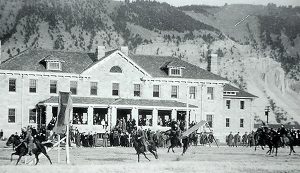
April 1899 * Fort Sheridan, Illinois, Post Quartermaster.
August 1899 * Chicago, Illinois, recruiting.
August 1899 * Seattle, Washington, enroute to the Philippines.
March 1900 * San Fernando, Luzon, Philippine Islands. Still with 3rd Cavalry.
1900 Census * Vigan, Philippine Islands, Military and Naval Forces.
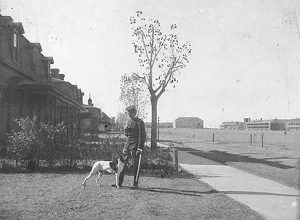
1901 – 1905 Western U.S. & National Parks Service
February 1901 * Promoted to Captain.
HH apparently had orders to go to Yosemite in June of 1901 but the monthly report there says he never joined the troop. This notation continues through September of 01.
June 1901 * Yosemite National Park, California.
August 1901 * San Francisco, California.
September 1901 * Yosemite National Park, California.
October 1901 * Fort McDowell, Angel Island, California.
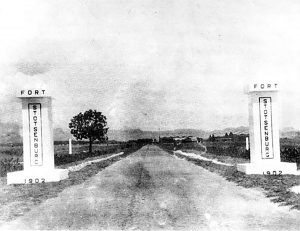
June 1902 * Fort Assiniboine, Havre, Montana.HewasaCaptainandstillwiththe 3rdCavalry.
November 1902 * Great Falls, Cascade, Montana.
July 1903 * Butte, Montana & Fort Assiniboine, Havre, Montana.
April 1904 * Fort Assiniboine, is in charge of calisthenics and is the fire marshal.
July 1904 * Listed as being on detached service at Fort Riley, Kansas where he was a competitor in the Division Cavalry Competition.
December 1904 * Eight days of hunting leave.
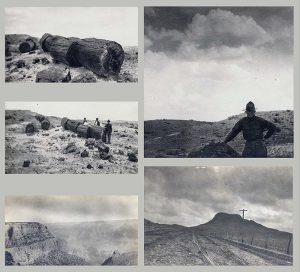
January 1905 * Back at Fort Assiniboine, Commanding L troop.
April 1905 * 5 days leave from 23 April to 28 April. Related to the death of Isabel Purington on 21 April. She died at Fort Assiniboine and is buried in Jefferson Barracks National Cemetery in St Louis.
July 1905 * Shooting competition at Fort Riley, Kansas.
November 1905 * Last entry for Fort Assinboine.
December 1905 – 1912 Foreign Service
December 1905 * Leaves Letterman Army Hospital, San Francisco, California for Honolulu, Hawaii.
January 1906 * 3rd Cavalry at Camp Stotsenburg, Pampanga, Phillipines.
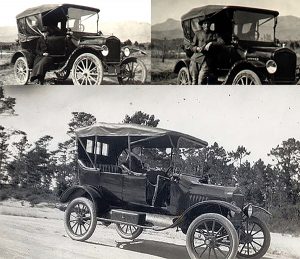
January 1907 * Fort William McKinley, Manila, Philippines, for medical treatment; hospitalized.
March 1907 * Fort William McKinley, Manila, Philippines, for medical treatment.
June 1907 * Post at Samal, Bataan reported that Harry was in Tokyo, Japan studying the Japanese language. It appears the 3rd Cavalry left the Philippines on December 07 or January 08 and went to Fort Sam Houston. It appears they kept him on their muster list through February 1912 with the notation that he was on detached service.
January 1908 * Tokyo, Japan, study of Japanese language

August 1910 * Washington, DC.
February 1911 * 4-month leave of absence.
June 1911 * Extended prior leave for two months with permission to go beyond the seas to Europe, per HHP
September 1911 * HH applied for a passport in New York, New York, and named his residence as Winamac, Indiana.
October 1911 * AWoL since June 12, 1911.
November 1911 * AWoL Russia and China per HHP.
January 1912 * Listed as being on detached service location unknown.
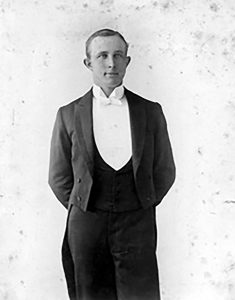
February 1912 * Listed as being on detached service location unknown. Enroute to Manila Per HHP
May 1912 * Fort William McKinley, Philippines. At least that was where the 7th Cavalry was. HH was on detached duty to Manila where he was doing duty in the Military Information Division. He was also assigned to F troop.
June 1912 * Manila, Philippine Islands, duty in Military Information Division.
July 1912 * Manila, Philippine Islands, duty in Military Information Division.
August 1912 * Fort William McKinley, Rizal, Philippines commanding F troop.
1913 – 1918 Western U.S. & National Parks Service
October or November 1913 * Transferred to the 12th Cavalry at Fort Robinson, Nebraska.
October 1913 * Enroute to Fort Robinson, Nebraska.
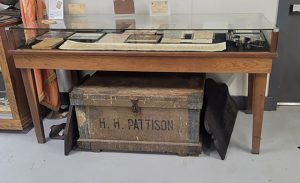
November 1913 * Orders to Fort Robinson were changed; instead goes to Fort Yellowstone, Wyoming.
December 1913 * Fort Yellowstone, assumes command of F troop. Yellowstone became the first National Park in 1872, but the Park Service wasn’t created until 1916. Between those dates the Army patrolled Yellowstone.
February 1914 * Fort Yellowstone, Wyoming; on detached service enroute to Monterey, California.
February 1915 * Presidio, Monterey, California.
September 1915 * Fort Riley, Kansas, for Mounted Service School.
December 1915 * Fort Riley, Kansas, Mounted Service School completed.
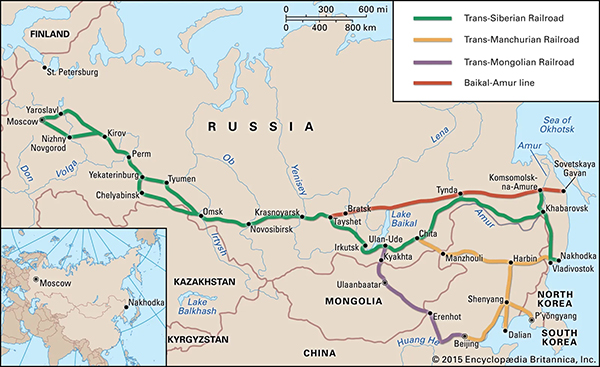
January 1916 * Carson City, Nevada.
January 1916 * Presidio, Monterey, California.
February 1916 * John Slaughter Ranch, Douglas, Arizona.
March 1916 * Letterman Army Hospital, San Francisco, California.
May 1916 * John Slaughter Ranch, Douglas, Arizona.
July 1916 * Promoted to Major.
September1916 * Admitted to Letterman Hospital. He was still listed as being sick in quarters in November 1916.
May 1917 * HH is listed in the Census as living in Winamac, Indiana.

July 1917 * Promoted to Lt. Colonel.
August 1917 * Still serving in the military at age 48.
August 1917 * Allentown, Lehigh, Pennsylvania
March 1918 * Greenville, South Carolina.
1918 – 1919 Foreign Service
March 1918 * Washington, DC; working with the Japanese Mission.
April 1918 * Pittsburgh, Allegheny, Pennsylvania; leading the US’s Japanese delegation.
April 1918 * Buffalo, New York.
September 1918 * Marries Lola Charlton in Philadelphia, Pennsylvania, on September 12, 1918.
October 1918 * Washington, DC, war college.
November 1918 * Washington, DC; Honor conferred by the Japanese Emporer: Order of the Rising Sun, third class

February 1919 * Files Emergency Passport Application at the consulate in Vladivostok, Russia. He reports that he left the US on Nov 5th 1918 and arrived in Vladivostok on Nov 30th, and that he lived in Japan from 1907-1911. He wanted the passport so he could travel to Japan and Canada enroute to the US. He arrived in San Francisco from Yokohama, Japan on 26 March 1919 with orders to proceed to Washington D.C.
March 1919 * Honolulu, Hawaii; arriving from Japan to Hawaii.
March 1919 * San Francisco, California, arriving from Hawaii.
August 1919 * Arrives in Fort Laramie, Wyoming. On August 12 he notes, “Retired, own request.”
October 1919 * Washington, DC, retired from Army.
1920 And Retirement (Kind Of)
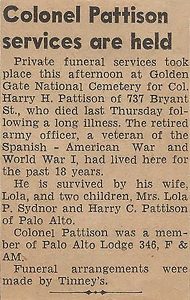
July 1920 * His daughter Lola (possible middle name Patricia) was born on July 3, 1920, in Baltimore, Maryland.
October 1921 * Logansport, Cass County, Indiana; living on a farm and William visits.
December 1924 * Santa Cruz, California; Awarded Silver Star for gallantry in action while in Santiago, Cuba, Battle of San Juan Hill, July 1, 1898. A little late, perhaps.
December 1924 * Monterey, California, residence.
January 1925 * Monterey, California, son, Harry Charlton, was born 15 January.
January 1926 * Oakland, California, charter member of Izaak Walton League (early conservationist).
1926 * Salinas; Monterey; Pacific Grove, California, USA; residence.
1928-1938 * Monterey County, California, United States; residence
December 1929 * Santa Cruz, California; Monterey Planning Commission Colonel Retired
June 1930 * 1930 census shows the family still in Monterey. Under occupation HH listed none, retired. Value of their house: $12,000. A black female servant is living with them; her name is Fayette Beckly. She was aged 59 and a widow. The house street number was 1050. The street name looks like Franklin, an address that Google maps says still exists. The picture from street view still looks very much like a photo the family has. The address is a couple of blocks outside of the Presidio.
July 1933 * Logansport, Indiana; Harry and family visit brother William.
July 1935 * Mastodon found by a company digging an irrigation ditch on the family farm in Rich Grove Township, Pulaski County, Indiana.
1935 * Palo Alto, Santa Clara, California; residence 737 Bryant St., Palo Alto, California.
June 1942 * Chicago, Cook County, Illinois; death of brother William.
October 1951 * HH dies in Palo Alto, Santa Clara County, California, on 4 October.
Family Stories
Written by granddaughter Jennifer Pattison Rumford.
Harry Howard Pattison won a place at West Point but wanted to be a doctor like his father and turned it down. His father wanted him to be a soldier. A year or two later, he applied again and was accepted again. Not sure if the medical world didn’t turn out or if his father wore him down. He went to West Point when West Point was going through a transformation period. It was the era of the first football team and the first baseball team. Grandad played on both, and his name is on the gymnasium wall for playing in the first (second for sure) Army-Navy game. There is a plaque for having lettered in both sports.
Harry Charlton Pattison told me that his father was married while at West Point. The young woman he married had tuberculosis and died before he graduated. Her name was Augusta Isabella Campbell. This was a big family secret, but Jim found proof of her when searching records around West Point.
His second marriage was to Isabel Purington/Wilder. Our grandmother was his third marriage. He was 56 when our father (Harry Charlton) was born. Harry Charlton said he felt like he was raised by his grandparents. Although his mother was a young woman, she acted the same age as his father.
Harry Howard Pattison served in the American West and in the Spanish American War. Regarding the Spanish American War, he told Harry Charlton that the horses were lost at sea, and he and his men cleared San Juan Hill on foot so that Teddy Roosevelt (“and his glory boys”) could ride up it. Although he collected Frederick Remington paintings, he did not approve of the way Remington hung out with Roosevelt.
Another story is that he bet that he and his horse could cover 100 miles in day, which he did. He took cold tea for himself and grain and water for his horse. He rode, always, in his McClellon saddle, and this was the start of the Army’s forced marches. When I was growing up, many young men were irritated to find out they were dating the granddaughter of their forced marches.
From Cuba he went to the Philippines. We have a trunk of swords and wooden shields that were captured in the Philippines, as well as President Aguinaldo’s wife’s mirror and place setting.
He went on to serve in Japan in the Emperor’s court. Family history says that when the Emperor found out he was a spy, he sent a box of presents to Harry Howard’s house and said farewell, we are sorry to hear you are leaving on the ship in the harbor tomorrow.
HHP was awarded the Order of the Rising Sun. He received this for spying on the Trans-Siberian Railroad in Russia and sharing at least some of this information with Japan, and for aiding their delegation on a trip to the U.S. He did make a trip from Japan to San Francisco, across the U.S., to England, Russia, and across Siberia – a fairly amazing trip for a man from a very small town in Indiana. [Editor’s note: and while, presumably, spying on the Russians!]
He also entertained the Japanese in the U.S. to convince them to stay out of WWI. Harry C. Pattison said his father told him he took the Japanese to a DuPont plant and marched soldiers past for hours. At the time, the U.S. had three tanks, so those three tanks would drive past, then drive around and rejoin the soldiers and drive past again. We had plenty of soldiers but few tanks.
Finally, he was said to have come home from Japan with the Japanese plans to invade the U.S. through Hawaii. This is a disputed story within our family.
He married my grandmother, Lola Charlton (his third wife) on September 12, 1918. His daughter (also Lola) was born in 1920 and his son in 1925 (my father, Harry C. Pattison). Oddly, in the Army and to his friends who knew him when he was married to Lola, his nickname was Billie, even though he had a brother named William.
In his retirement, he may or may not have been working toward building the Japanese section of the language school at Monterey which was not yet established. When he died, the library at Stanford University took all his papers.
Harry’s brother William David was born on March 6, 1873, in Star City, Indiana. William worked at, later co- owned and even later owned the Carper drugstore in downtown Winamac. He visited Harry in Japan.
